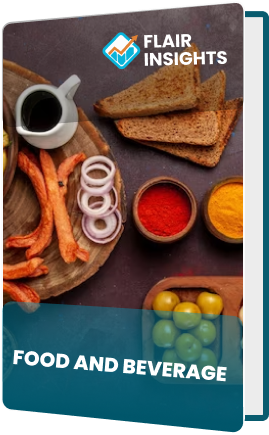
Global Food Authenticity Testing Market Size By Type (PCR, LC-MS), By Application (Meat Speciation, Country Of Origin and Aging), By Region, And Segment Forecasts, 2023 to 2032
Report Id: 10879 | Published Date: Feb 2023 | No. of Pages: | Base Year for Estimate: Feb 2023 | Format:
The Global Food Authenticity Testing Market was valued at USD 6.2 billion in 2023 and is projected to surpass USD 12.1 billion by 2031, growing at a CAGR of 8.9% during the forecast period of 2023-2031. The demand for food authenticity testing is driven by the growing need to verify food labeling claims, combat food fraud, and ensure consumer safety. With rising instances of food adulteration and mislabeling, regulatory bodies and food manufacturers are prioritizing authenticity testing to maintain quality and consumer trust.
Drivers
Rising Food Fraud Cases: Increased
incidents of food fraud, including mislabeling and adulteration, are driving
the demand for authenticity testing globally.
Strict Regulatory Standards: Governments
and regulatory bodies are implementing stringent measures to ensure food
authenticity, promoting the adoption of advanced testing technologies.
Consumer Awareness: Growing consumer demand
for transparency and clean-label products is compelling manufacturers to invest
in authenticity testing.
Restraints
High Testing Costs: The cost of
implementing advanced food authenticity testing methods can be prohibitive,
particularly for small-scale manufacturers.
Complexity in Testing Processes:
Identifying the authenticity of multi-ingredient foods remains a technical
challenge.
Opportunity
Technological Advancements: Innovations in
testing methodologies, such as DNA-based techniques and spectrometry, are expanding
the capabilities of food authenticity testing.
Emerging Markets: The growing food industry
in Asia-Pacific and Latin America presents significant opportunities for market
growth.
Market by System Type Insights
The Spectrometry Segment dominated the
market in 2023, attributed to its accuracy in detecting contaminants and
verifying food composition. The demand for spectrometry is expected to grow due
to advancements in portable spectrometry devices.
Market by End-use Insights
The Processed Food Segment accounted for
the largest market share in 2023, driven by the increasing need to verify the
authenticity of processed and packaged foods. This segment is anticipated to
grow as regulatory requirements for food labeling intensify.
Market by Regional Insights
Europe led the market in 2023, backed by
its strong regulatory framework and significant focus on food safety and
quality.
Asia-Pacific is expected to register the
highest growth rate during the forecast period, driven by expanding food industries
in China, India, and Japan and increasing consumer awareness.
Competitive Scenario
Key players in the Global Food Authenticity
Testing Market include SGS SA, Eurofins Scientific, Intertek Group, TÜV SÜD,
Bureau Veritas, ALS Limited, and Merieux NutriSciences. These companies are
focusing on partnerships, acquisitions, and innovations to expand their market
presence. Recent developments include:
2023: Eurofins Scientific launched an
advanced spectrometry-based testing service tailored for the processed food
industry.
2024: SGS SA partnered with a major food
manufacturer to implement a blockchain-based food authenticity verification
system.
2025: TÜV SÜD introduced portable DNA-based
testing kits for on-site authenticity checks.
Scope
of Work – Global Food Authenticity Testing Market
|
Report
Metric |
Details |
|
Market Size (2023) |
USD 6.2 billion |
|
Market Size (2031) |
USD 12.1 billion |
|
CAGR (2023-2031) |
8.9% |
|
Key Segments |
System Type, End-use, Region |
|
Leading Region |
Europe |
|
Fastest-Growing Region |
Asia-Pacific |
|
Major Companies |
SGS SA, Eurofins Scientific, TÜV SÜD |
|
Growth Drivers |
Food Fraud Prevention, Regulatory
Standards |
|
Opportunities |
Emerging Markets, Technological
Advancements |

Speak with an analyst to get exclusive insights tailored to your needs
.png)
